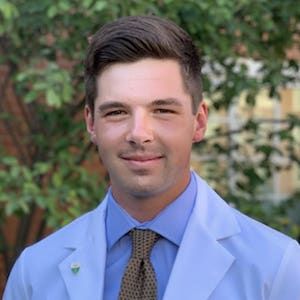Article
Students Underrepresented in Medicine Report Higher Rates Of Exhaustion-Related Burnout
Author(s):
Data show medical students who are URIM were more likely to be in the top quartile of those who experienced exhaustion-related burnout.
Jamieson M. O’Marr, MS

Although burnout rates are similar among medical students who are considered underrepresented in medicine (URIM) compared to those who are not, new data suggest students who are underrepresented had a higher risk for exhaustion-related burnout.
These findings additionally showed medical students who are URIM reported more episodes of discrimination and a lower positive perception of student-faculty interactions in the medical school learning environment, compared to their peers who are not URIM.
“These findings suggest that burnout can and does vary among medical students based on their own unique experiences and adversity faced within the medical school environment,'' wrote study author Jamieson M. O’Marr, MS, Yale School of Medicine.
Data were obtained from responses to the 2016 and 2017 Association of American Medical Colleges Graduation Questionnaire (AAMC GQ). This included allopathic medical students graduating from all US allopathic medical schools in 2016 and 2017 (n = 38,197).
The analysis defined medical students who self-identified as Black, Hispanic, Native American/Alaskan Native, and/or Pacific Islander as URIM. Further demographic information included age, sex, marital status, and prescence of medical loans.
Burnout was measured using the Oldenburg Burnout Inventory for Medical Students (OLBI-MS), which surveyed symptoms of burnout along 2 constructs: exhaustion and disengagement.
The exhaustion subscale measured the mental and physical exhaustion experienced amid the stressors of medical school, whereas the disengagement subscale represented students’ level of interest and engagement with medical school work.
Additionally, the Medical Student Learning Environment Survey (MSLES) questions in the AAMC GQ focused on 2 domains, including emotional climate and student-faculty interaction.
Investigators stratified burnout, burnout subscales, and MSLES scores into quartiles based on numeric summary score for each construct and then assessed as categorical variables. Analyses occurred between December 2019 - July 2020.
At a response rate of 80.7%, a total of 30,651 students responded to the questionnaire. Then, following exclusions, 26,567 responses were analyzed. Data show 3947 (14.9%) participants identified as URIM and were more likely to be female (2167 [54.9%] versus 10,755 [47.5%]; P <.001).
Investigators observed medical students who are URIM reported modestly higher levels of exhaustion-related burnout (mean, 11.84 versus 11.48; P < .001) and exhaustion (mean, 9.24 versus 9.36; P <.001).
However, data show modestly lower burnout scores associated with disengagement in students who are URIM (mean, 9.24 versus 9.36; P = .047).
These students additionally reported slightly more favorable medical school emotional climate (mean, 9.80 versus 9.62; P = .002), but less favorable student-faculty interactions (mean, 14.09 versus 14.9; P <.001).
More data show medical students who are URIM were more likely to be in the top quartile of those who experienced exhaustion-related burnout (odds ratio, 1.19; 95% CI, 1.09 - 1.29), but had lower odds of being in the top quartile for disengagement (odds ratio, 0.87; 95% CI, 0.80 - 0.94).
Investigators further noted that ”students who reported experiencing a discrimination event related to their race and ethnicity had significantly higher odds of experiencing overall burnout.”
"To facilitate the wellbeing and academic successes of medical students who are URIM, institutions must invest in evaluating their learning environments to ameliorate root causes of discrimination, mistreatment, and undue burdens placed on students who are URIM," O’Marr concluded.
The study, “Perceptions on Burnout and the Medical School Learning Environment of Medical Students Who Are Underrepresented in Medicine,” was published in JAMA Network Open.





